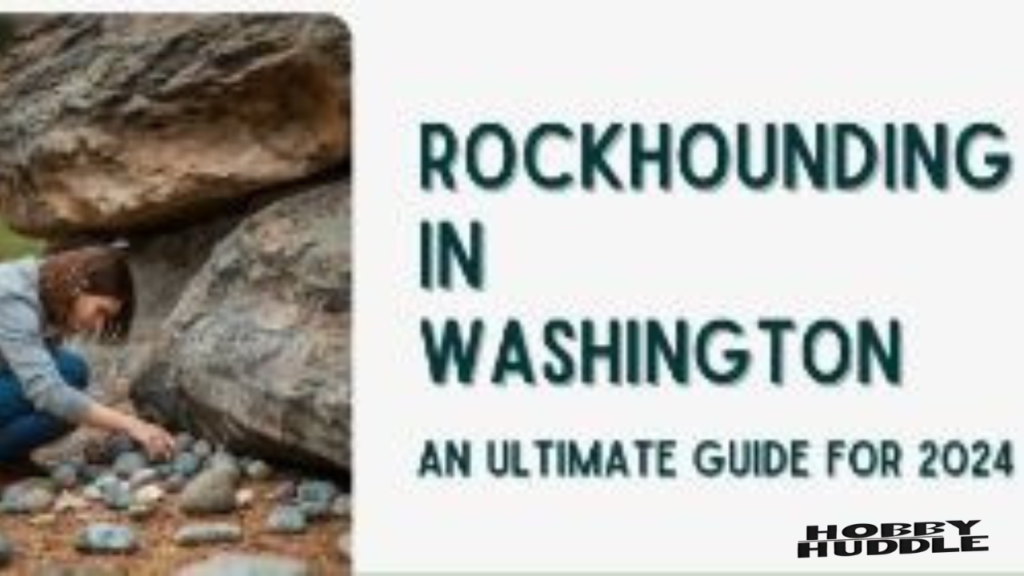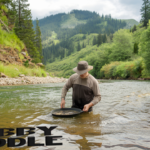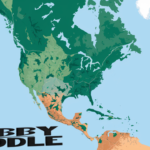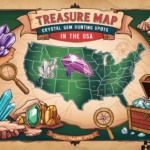Are you ready to unearth Washington’s hidden treasures? Welcome to the definitive guide on rockhounding in the Evergreen State.
Whether you’re a seasoned collector or a curious newcomer, Washington’s diverse geological landscape offers a treasure trove of opportunities for rockhounding enthusiasts. From the rugged coastlines to the towering Cascades, let’s dive into the world of rocks, minerals, and fossils that make Washington a rockhound’s paradise.
Introduction to Rockhounding in Washington
Rockhounding, the art of collecting rocks, minerals, and fossils, has captivated the hearts of nature lovers and geology enthusiasts for generations. In Washington, this pursuit takes on a special significance due to the state’s rich and varied geological history. From ancient volcanic activity to glacial movements, the forces of nature have sculpted Washington into a wonderland for rockhounds.
Why is Washington such a prime location for rockhounding? The answer lies in its geological diversity. The state boasts:
- Volcanic landscapes ripe with unique minerals
- Glacial deposits hiding prehistoric treasures
- Coastal areas offering tumbled agates and jaspers
- Mountain ranges with exposed mineral veins
- Petrified forests preserving ancient wood
This guide will take you through the legal aspects, top locations, essential techniques, and much more to ensure your rockhounding adventures in Washington are both rewarding and responsible.
You Might Like This: Gold Panning in Virginia: Everything You Need to Know in 2024
Rockhounding Laws and Regulations in Washington
Before you grab your rock hammer and head out, it’s crucial to understand the legal framework surrounding rockhounding in Washington. The state’s regulations aim to preserve natural resources while allowing enthusiasts to enjoy their hobby.
State Laws and Permitting Requirements
In Washington, rockhounding is generally permitted on public lands, but with some important caveats:
- Collecting is limited to reasonable amounts for personal use
- Commercial collection requires special permits
- Some areas may have specific restrictions or be off-limits
It’s always wise to check with local authorities or land management offices before collecting in a new area.
Federal Land Regulations
When rockhounding on federal lands, such as those managed by the Bureau of Land Management (BLM) or National Forests, different rules apply:
- BLM lands often allow casual collecting without a permit
- National Forests may require a free permit for personal collecting
- Wilderness areas typically prohibit any removal of natural objects
Private Property Considerations
Always obtain permission before rockhounding on private property. Many landowners are open to rockhounds if asked politely and informed of your intentions.
Ethical Rockhounding Practices
Responsible rockhounding goes beyond legal compliance. Here are some ethical guidelines to follow:
- Fill in any holes you dig
- Leave the area as you found it or better
- Take only what you need and can carry
- Avoid disturbing wildlife or plant life
- Share your knowledge with others to promote conservation
By adhering to these principles, we ensure that future generations can enjoy rockhounding in Washington for years to come.
You Might Like This: Gold Panning in Pennsylvania [A Gold Prospecting Guide for 2024]
Geological Treasures of Washington
Washington’s geological bounty is as diverse as it is abundant. Let’s explore some of the common and rare finds that await eager rockhounds.
Common Rocks and Minerals
Washington’s landscapes are dotted with a variety of readily found specimens:
| Mineral/Rock | Description | Common Locations |
|---|---|---|
| Quartz | Clear to milky crystals | Cascade Mountains |
| Agates | Banded chalcedony | Ocean beaches, river beds |
| Jasper | Opaque, colorful chalcedony | Eastern Washington |
| Petrified Wood | Fossilized ancient trees | Ginkgo Petrified Forest |
| Basalt | Dark, fine-grained volcanic rock | Throughout the state |
| Granite | Coarse-grained igneous rock | North Cascades |
| Obsidian | Volcanic glass | Mount St. Helens area |
| Calcite | Calcium carbonate crystals | Limestone quarries |
Rare Finds and Prized Specimens
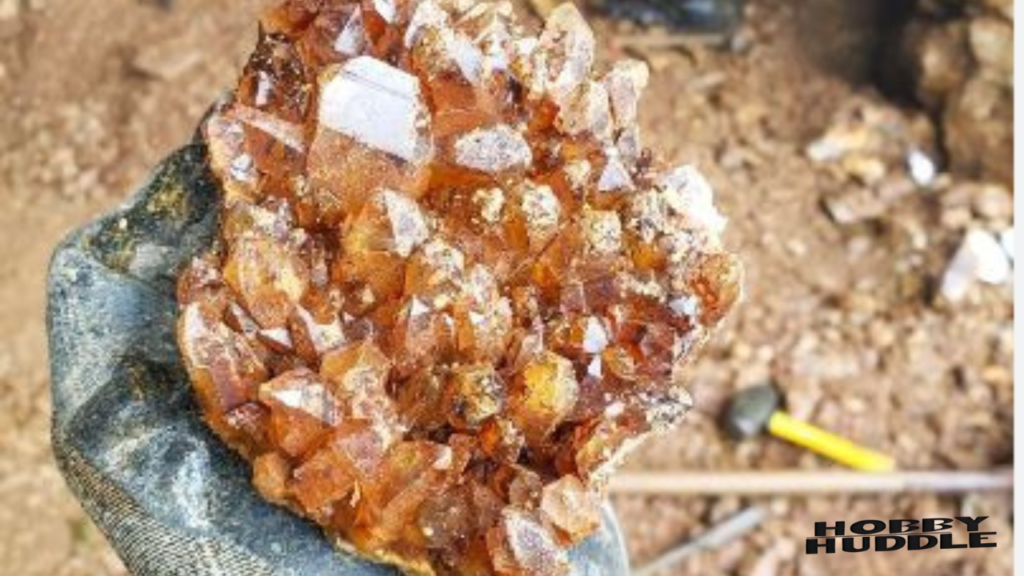
For those seeking more elusive treasures, Washington offers:
- Ellensburg Blue Agates: Rare blue agates found only near Ellensburg
- Amethyst: Purple quartz crystals in scattered locations
- Garnets: Red gemstones in metamorphic rocks
- Gold: Fine flakes in certain rivers and streams
- Jade: Green nephrite in limited northwestern areas
Geological History Shaping Washington’s Deposits
Washington’s rockhounding potential is a product of its tumultuous geological past:
- Volcanic eruptions created vast basalt flows and deposited ash
- Glaciers carved valleys and left behind erratic boulders
- Ancient seas left marine fossils high in the mountains
- Tectonic activity uplifted and exposed mineral-rich rocks
Understanding this history can help rockhounds predict where to find specific specimens and appreciate the forces that created them.
Top Rockhounding Locations by Region
Washington’s diverse geography offers unique rockhounding opportunities in each of its regions. Let’s explore some of the best spots across the state.
Northwest Washington & Seattle Area
The Northwest region, including the Seattle area, is known for its lush forests and rugged mountains, offering a variety of rockhounding experiences.
Mount Baker Area
- Quartz crystals in volcanic rock
- Zeolites in basalt cavities
- Stunning scenery for outdoor enthusiasts
Snoqualmie Pass
- Agate nodules in river gravels
- Quartz veins in exposed rock faces
- Accessible location for weekend trips
Green River Gorge
- Jasper and agate in river deposits
- Petrified wood fragments
- Beautiful canyon setting for rockhounding
Central Washington
Central Washington’s arid climate and exposed geology make it a prime area for rockhounding.
Ellensburg Blue Agate Sites
- World-famous blue agates
- Limited collecting areas, some on private land
- Vibrant rockhounding community
Saddle Mountains
- Petrified wood in abundance
- Agate and jasper deposits
- Challenging terrain with rewarding finds
Yakima River Canyon
- Thunder eggs (filled geodes)
- Colorful agates in basalt outcrops
- Scenic drives and multiple collecting sites
Eastern Washington
The eastern part of the state offers unique geological formations and mineral deposits.
Spokane River
- Quartz and feldspar crystals
- Garnets in metamorphic rocks
- Accessible urban rockhounding spots
Kettle Falls Area
- Magnetite and hematite deposits
- Quartz crystals in pegmatite veins
- Historical mining district with diverse minerals
Columbia River Gorge
- Agates and petrified wood along shores
- Zeolites in basalt formations
- Spectacular views while rockhounding
Southwest Washington
The southwest region boasts diverse rockhounding opportunities from mountains to beaches.
Lewis River
- Agate and jasper in river gravels
- Zeolites in volcanic rocks
- Beautiful forest settings for rock hunting
Mount St. Helens Vicinity
- Volcanic rocks and ash deposits
- Pumice and obsidian fragments
- Unique opportunity to study recent volcanic geology
Ocean Beaches
- Agates, jaspers, and petrified wood
- Fossils in coastal cliffs
- Ever-changing deposits with each tide
Sought-After Specimens and Where to Find Them
While Washington offers a wide array of geological specimens, some are particularly prized by rockhounds. Here’s where to find some of the most sought-after treasures.
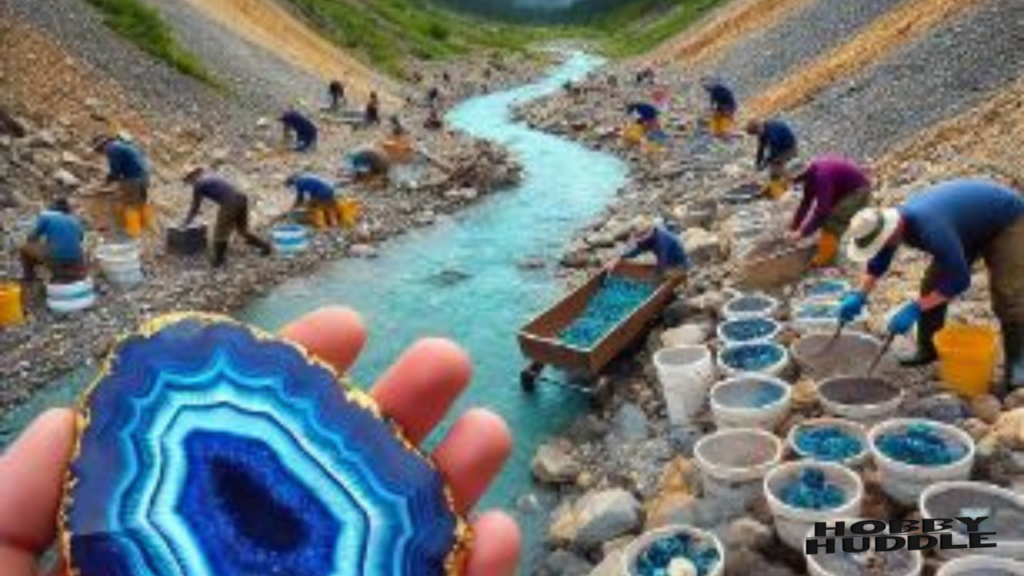
Jade Hunting Hotspots
Jade, specifically nephrite, can be found in limited areas of Washington:
- Cascade Mountains: Look for green, tough boulders in streambeds
- Nooksack River: Known for sporadic jade deposits
- Stillaguamish River: Occasional jade finds reported
Remember, true jade is rare and often confused with similar-looking stones. Always verify your finds with experts or local geology clubs.
Geode Collecting Areas
Geodes, those rocky spheres with crystal-lined cavities, are a favorite among collectors:
- Walker Valley: Famous for quartz and calcite geodes
- Greenwater: Look for thunder eggs (a type of geode)
- Salmon Creek: Small but plentiful geodes in creek beds
| Geode Location | Type of Geode | Best Season to Hunt |
|---|---|---|
| Walker Valley | Quartz/Calcite | Spring/Fall |
| Greenwater | Thunder Eggs | Summer |
| Salmon Creek | Agate-filled | Late Spring |
| Little Naches River | Quartz-lined | Summer/Early Fall |
| Ellensburg Area | Blue Agate | Spring/Fall |
| Columbia River | Basalt Geodes | Year-round |
| Mount Rainier Area | Zeolite-filled | Summer |
| Olympic Peninsula | Chalcedony | Spring/Summer |
Prime Agate Locations
Agates, with their beautiful banding and colors, can be found throughout Washington:
- Ocean Shores: Beach agates in various colors
- Whidbey Island: Agate beaches with scenic views
- Saddle Mountain: Famous for moss agates
Petrified Wood Sites
Washington is renowned for its petrified wood, especially in:
- Ginkgo Petrified Forest State Park: World-class petrified wood specimens
- Saddle Mountains: Variety of petrified wood types
- Yakima River: Smaller fragments in river gravels
Quartz Crystal Pockets
For those seeking sparkly quartz crystals:
- Mount Baker: Clear quartz in volcanic host rock
- Snoqualmie Pass: Quartz veins in metamorphic rocks
- Cascade Mountains: Various locations with exposed quartz deposits
Essential Rockhounding Techniques for Washington
Successful rockhounding in Washington requires a blend of knowledge, patience, and the right techniques. Here are some essential methods tailored to Washington’s diverse landscapes.
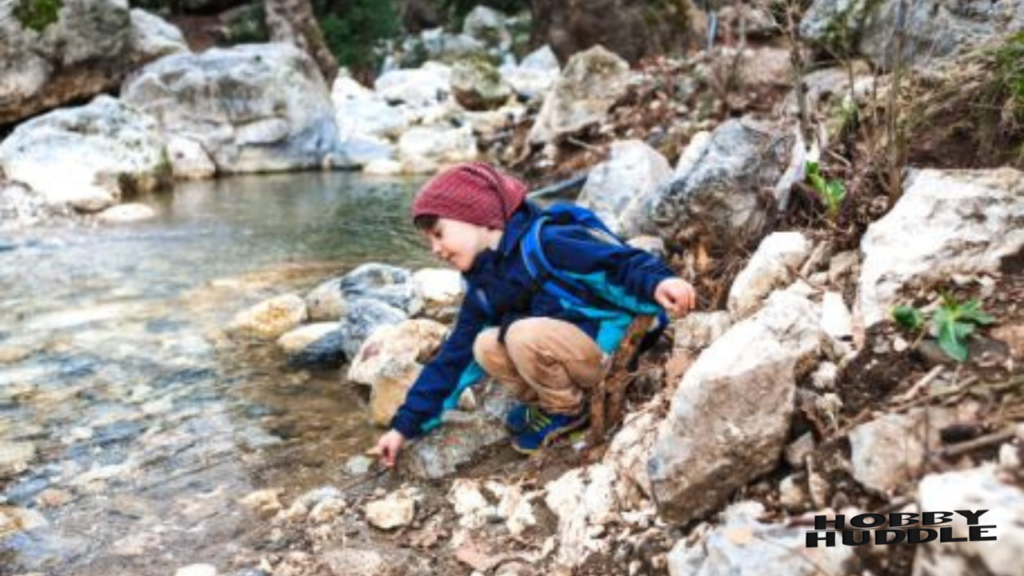
You Might Like This: Dumpster Diving In Indiana [Is It Legal in 2024?]
Beach Combing Strategies
Washington’s extensive coastline offers rich pickings for rockhounds:
- Timing is key: Visit during low tide, especially after storms
- Look for gravel patches: These often contain concentrated deposits
- Use polarized sunglasses: They help spot translucent agates
- Check freshly eroded cliff faces: New material often appears here
River and Stream Prospecting
Many of Washington’s rivers are gold-bearing and rich in other minerals:
- Focus on inside bends: Heavier materials settle in these areas
- Check behind large boulders: Minerals often accumulate here
- Look for color changes in gravel: This can indicate mineral deposits
- Use a classifier and pan: Essential for finding smaller specimens
High Country Rock Hunting
The Cascade and Olympic mountains offer unique rockhounding opportunities:
- Study geological maps: Understand the rock types in your area
- Look for exposed outcrops: Recent landslides or road cuts are ideal
- Be prepared for weather changes: Mountain conditions can shift rapidly
- Respect alpine environments: Stick to established trails when possible
Desert Rockhounding
Eastern Washington’s arid regions require different approaches:
- Start early or late: Avoid the intense midday heat
- Bring plenty of water: Dehydration is a serious risk
- Use UV lights: Some minerals fluoresce, making night hunting productive
- Look for desert varnish: It often indicates the presence of interesting minerals
Remember, regardless of the environment, always practice safe and responsible rockhounding. Inform someone of your plans, bring appropriate gear, and be prepared for emergencies.

Gearing Up: Equipment for Washington Rockhounds
Having the right tools can make or break your rockhounding experience in Washington. Here’s a comprehensive guide to the equipment you’ll need for various environments and types of collecting.
Basic Tools Every Rockhound Needs
These essentials should be in every rockhound’s kit:
- Rock hammer: For breaking and trimming specimens
- Safety goggles: Protect your eyes from flying rock chips
- Chisel set: For precision extraction of delicate specimens
- Hand lens or loupe: For examining small details and identifying minerals
- Field guide: To help identify your finds
- Collection bags: To safely transport your treasures
- First aid kit: Safety first!
Specialized Equipment for Different Environments
Depending on where you’re rockhounding in Washington, you might need:
For Beach Combing
- Sand scoop: Makes sifting through sand easier
- Tide chart: To plan your visit during low tide
- Waterproof boots: Keep your feet dry while exploring
For River Prospecting
- Gold pan: Essential for placer deposits
- Classifier screens: To sort material by size
- Sluice box: For processing larger amounts of material
For Mountain Exploration
- Sturdy hiking boots: With good ankle support
- Backpack: To carry equipment and finds
- Trekking poles: For stability on rough terrain
For Desert Rockhounding
- UV flashlight: For finding fluorescent minerals
- Sun protection: Hat, sunscreen, and light, long-sleeved clothing
- GPS device: To mark productive locations and ensure you don’t get lost
Safety Gear for Various Terrains
Safety should always be your top priority. Here’s what you need:
- Hard hat: When working near cliffs or in old mining areas
- Gloves: To protect your hands from sharp rocks and tools
- Knee pads: For comfort during extended kneeling
- Emergency whistle: To signal for help if needed
- Portable water filter: For accessing safe drinking water in the backcountry
| Terrain Type | Essential Gear | Optional but Useful |
|---|---|---|
| Beaches | Sand scoop, tide chart | Metal detector |
| Rivers | Gold pan, classifier | Snorkel and mask |
| Mountains | Hiking boots, backpack | Altimeter |
| Deserts | UV light, sun protection | Portable shade |
| Forests | Compass, map | Tree identification guide |
| Urban areas | Small tool kit | Foldable cart |
| Quarries | Hard hat, safety vest | Ladder |
| Mines (if permitted) | Headlamp, rope | Gas detector |
Remember, the best tool in your kit is knowledge. Familiarize yourself with the proper use of each piece of equipment before heading out. And always check local regulations – some areas may have restrictions on certain tools or collection methods.
You Might Like This: 1965 Quarter Coin Value (Errors List & No Mint Mark Worth)
Seasonal Rockhounding in Washington
Washington’s diverse climate means that rockhounding opportunities change with the seasons. Understanding these seasonal variations can help you plan your trips more effectively and safely.
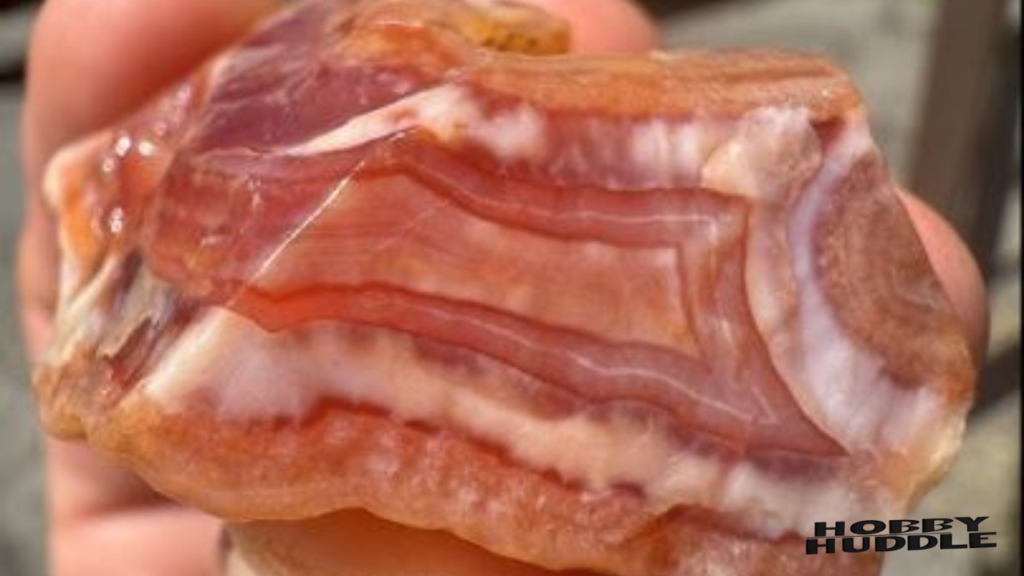
Best Times to Hunt Specific Minerals
Different seasons offer unique advantages for finding certain specimens:
Spring
- Best for: Agates on beaches, as winter storms have uncovered new deposits
- Ideal locations: Coastal areas, river mouths
- Watch out for: Muddy conditions in inland areas
Summer
- Best for: High country rockhounding, as snow melts reveal new outcrops
- Ideal locations: Cascade Mountains, Olympic Peninsula
- Watch out for: Crowded popular sites, wildfires in dry areas
Fall
- Best for: Desert rockhounding, as temperatures cool
- Ideal locations: Eastern Washington, Saddle Mountains
- Watch out for: Early snow in mountain passes
Winter
- Best for: Fossil hunting along coastal cliffs, as erosion exposes new layers
- Ideal locations: Southwestern Washington beaches
- Watch out for: Dangerous surf conditions, short daylight hours
Weather Considerations and Preparation
Washington’s weather can be unpredictable, so always be prepared:
- Check weather forecasts before your trip
- Dress in layers to adapt to changing conditions
- Bring rain gear, even if the forecast is clear
- Be aware of flash flood risks in desert areas during rare rain events
- Know the signs of hypothermia and heat exhaustion
Accessibility of Locations Throughout the Year
Some prime rockhounding spots may be inaccessible during certain seasons:
- High mountain passes often close from late fall to late spring
- Desert areas can be dangerously hot in mid-summer
- Some beaches may be closed during bird nesting seasons
- River levels can make some sites unreachable during spring runoff
Always check with local authorities or visitor centers for current conditions and access information before planning your trip.
Rockhounding Communities and Resources in Washington
Connecting with fellow rockhounds can enhance your experience, provide valuable local knowledge, and help you contribute to the broader geological community in Washington.
Local Clubs and Organizations
Joining a rockhounding club offers numerous benefits:
- Puget Sound Knappers: Focuses on flintknapping and prehistoric tools
- Northwest Federation of Mineralogical Societies: Umbrella organization for many local clubs
- Washington State Mineral Council: Promotes responsible rockhounding and mineral education
These clubs often organize field trips, workshops, and social events for members.
Annual Gem and Mineral Shows
Mark your calendar for these exciting events:
- Seattle Gem, Mineral & Fossil Show: Held annually in spring
- Spokane Rock Rollers Gem, Mineral & Fossil Show: Usually in March
- Yakima Rock and Mineral Club Show: Typically in April
These shows are great opportunities to display your finds, learn from experts, and purchase specimens and equipment.
Museums and Educational Centers
Expand your knowledge at these institutions:
- Burke Museum of Natural History and Culture: Located in Seattle, offers extensive geology exhibits
- Rice Northwest Museum of Rocks and Minerals: Just across the border in Oregon, but well worth the trip
- Ginkgo Petrified Forest State Park Interpretive Center: Learn about Washington’s famous petrified wood
These centers often host workshops and lectures that can deepen your understanding of geology and rockhounding techniques.
Online Forums and Resources for Washington Rockhounds
The internet provides a wealth of information for rockhounds:
- Mindat.org: Comprehensive database of minerals, including Washington locations
- Rockhounding Washington State Facebook group: Connect with local enthusiasts
- Washington Geological Survey: Official state resource for geological information
Remember to cross-reference online information with official sources and local knowledge for the most accurate and up-to-date guidance.
Identifying and Preserving Your Finds
Once you’ve collected your specimens, the next step is proper identification and preservation. This process not only helps you understand your finds but also ensures they remain in good condition for years to come.
Field Identification Techniques
While in the field, use these methods to preliminarily identify your specimens:
- Visual inspection: Look at color, luster, and crystal structure
- Hardness test: Use a knife or nail to test the mineral’s hardness
- Streak test: Rub the specimen on unglazed porcelain to see its powder color
- Magnetism: Check if the specimen is attracted to a magnet
- UV light: Some minerals fluoresce under ultraviolet light
Remember, final identification often requires more detailed analysis at home or in a lab.
Cleaning and Storing Specimens
Proper cleaning and storage are crucial for maintaining your collection:
Cleaning
- Use water and a soft brush for most specimens
- Avoid water on soft minerals like selenite or malachite
- Ultrasonic cleaners work well for quartz and similar hard minerals
- For delicate fossils, consult an expert before cleaning
Storing
- Keep specimens in a cool, dry place
- Use acid-free paper or cotton to wrap delicate pieces
- Label each specimen with its name, location, and date found
- Consider display cases with adjustable humidity for sensitive minerals
Tools and Resources for Further Research
To dive deeper into identification and preservation:
- Invest in a good mineral identification guide specific to Washington
- Use online resources like Mindat.org for detailed mineral information
- Consider purchasing a USB microscope for examining tiny details
- Join a local rockhounding club to access shared knowledge and equipment
Beyond Collecting: The Broader Impact of Rockhounding
Rockhounding is more than just a hobby; it can contribute to scientific understanding and conservation efforts. Here’s how you can make your rockhounding adventures more meaningful.
Citizen Science Opportunities
Contribute to scientific research through citizen science projects:
- EarthCacheâ„¢: Geocaching program that focuses on earth science education
- Nature’s Notebook: Record your observations of plants and animals while rockhounding
- Washington Geological Survey’s Landslide Reporting: Help map landslide occurrences
These projects allow you to share your observations with scientists and contribute to our understanding of Washington’s geology.
Conservation and Site Preservation Efforts
Responsible rockhounding includes protecting the environment:
- Participate in clean-up events at popular rockhounding sites
- Report any illegal dumping or environmental damage you encounter
- Support organizations working to preserve geological sites
- Educate others about the importance of leaving no trace
Educational Value for All Ages
Rockhounding can be a powerful educational tool:
- Organize field trips for local schools or youth groups
- Create display boxes of your finds for educational presentations
- Volunteer at museums or nature centers to share your knowledge
- Use your collection to teach others about geology and earth science
By engaging in these activities, you’re not just enjoying a hobby but also contributing to scientific knowledge and environmental stewardship.
FAQs on Rockhounding in Washington
Let’s address some common questions about rockhounding in the Evergreen State:
Beginner-Friendly Locations
Q: I am new to rockhounding. Where should I start in Washington?
A: For beginners, try these accessible locations:
- Deception Pass State Park: Beach agates and jasper
- Yakima River Canyon: Geodes and petrified wood
- Green River Gorge: Jasper and common opal
These sites offer a variety of specimens and are relatively easy to access.
Fossil Hunting Regulations
Q: What are the rules for collecting fossils in Washington?
A: Fossil collecting rules vary depending on land ownership:
- State lands: Limited collecting for personal use is generally allowed
- Federal lands: Vertebrate fossils are protected; invertebrate and plant fossils can often be collected in small quantities
- Private lands: Always obtain permission from the landowner
Always check current regulations before collecting, as rules can change.
Gold Panning Opportunities
Q: Can I pan for gold in Washington?
A: Yes, gold panning is allowed in many areas of Washington:
- Swauk Creek: Historic gold mining area
- Peshastin Creek: Known for fine gold
- Wynoochee River: Accessible panning locations
Remember to check regulations and obtain any necessary permits before panning.
Meteorite Hunting in Washington
Q: Are there opportunities for meteorite hunting in Washington?
A: While meteorites can be found anywhere, Washington isn’t known for abundant finds. However:
- Eastern Washington’s open areas are good for searching
- The Odessa Meteorite Crater in Lincoln County is of interest
- Always obtain permission before searching on private land
Types of Rocks for Rockhounding Trips
Q: What types of rocks can be found in Washington for rockhounding trips?
A: Washington offers a diverse range of rocks:
- Igneous: Basalt, granite, obsidian
- Sedimentary: Sandstone, limestone, shale
- Metamorphic: Gneiss, schist, marble
Popular specimens include agates, jasper, petrified wood, and quartz crystals.
Restrictions for Rockhounding
Q: Are there any restrictions for rockhounding in Washington?
A: Yes, several restrictions apply:
- No collecting in National Parks or Monuments
- State Parks allow limited surface collecting only
- Some areas require permits or have quantity limits
- Certain fossils and artifacts are protected by law
Always research the specific rules for your chosen location before collecting.
Rockhounding in Western Washington
Q: Can I go rockhounding in western Washington?
A: Absolutely! Western Washington offers many opportunities:
- Olympic Peninsula beaches: Agates and jasper
- Cascade foothills: Quartz crystals and zeolites
- Snoqualmie Pass area: Geodes and thunder eggs
The wetter climate can make some areas challenging, so plan accordingly.
Variety of Minerals
Q: What are some areas in Washington known for a variety of minerals?
A: Several regions are known for mineral diversity:
- Cascade Mountains: Quartz, epidote, garnet
- Okanogan Highlands: Gold, copper, tourmaline
- San Juan Islands: Rare minerals in metamorphic rocks
These areas often require more advanced rockhounding skills and knowledge.
Collecting on State Land
Q: Can I collect rocks and minerals on any part of the state of Washington?
A: Not everywhere. Here’s a quick guide:
- State Trust Lands: Often allow recreational collecting
- State Parks: Limited surface collecting only
- Wildlife Areas: Check specific regulations
- Always avoid archaeological sites and protected areas
When in doubt, contact the Washington Department of Natural Resources for guidance.
Final Thoughts
Rockhounding in Washington is a journey through time, written in stone. From the volcanic peaks of the Cascades to the wave-worn beaches of the Pacific, each rock, mineral, and fossil tells a story of the forces that shaped this diverse state. As you embark on your rockhounding adventures, remember that you’re not just collecting specimens — you’re connecting with the earth’s history and becoming part of the ongoing story of geological discovery in Washington.
Whether you’re sifting through river gravels for that perfect agate, cracking open a geode to reveal its crystal heart, or marveling at a piece of petrified wood that once grew in an ancient forest, rockhounding offers endless opportunities for wonder and learning. It’s a pursuit that rewards patience, knowledge, and respect for the natural world.
As you explore Washington’s geological treasures, keep these key points in mind:
- Always practice responsible rockhounding
- Stay informed about laws and regulations
- Prioritize safety in all your adventures
- Share your knowledge and passion with others
- Contribute to conservation efforts when possible
By following these principles, you’ll not only enrich your own experience but also help ensure that future generations can enjoy the thrill of discovery in Washington’s rich geological landscape.
So grab your rock hammer, lace up your boots, and head out to explore. The rocks of Washington are waiting to reveal their secrets. Happy hunting!

Emma Garcia is a seasoned blogger at Hobby Huddle, where her passion for exploring diverse hobbies shines through her engaging posts. With years of experience in writing and a keen eye for detail, Emma brings readers insightful tips and fresh perspectives on everything from crafts to cooking. Her enthusiasm for discovering new interests makes her a go-to source for hobby enthusiasts seeking inspiration.

